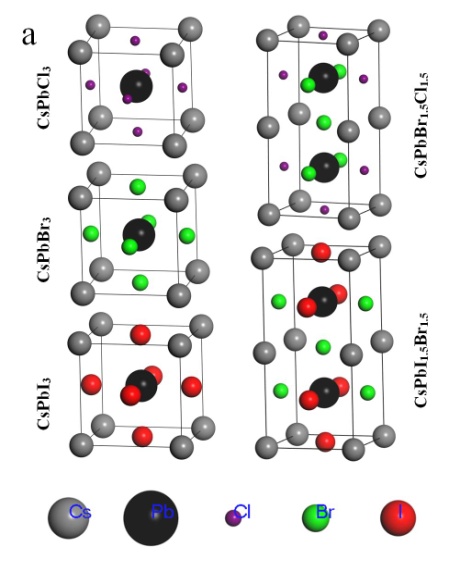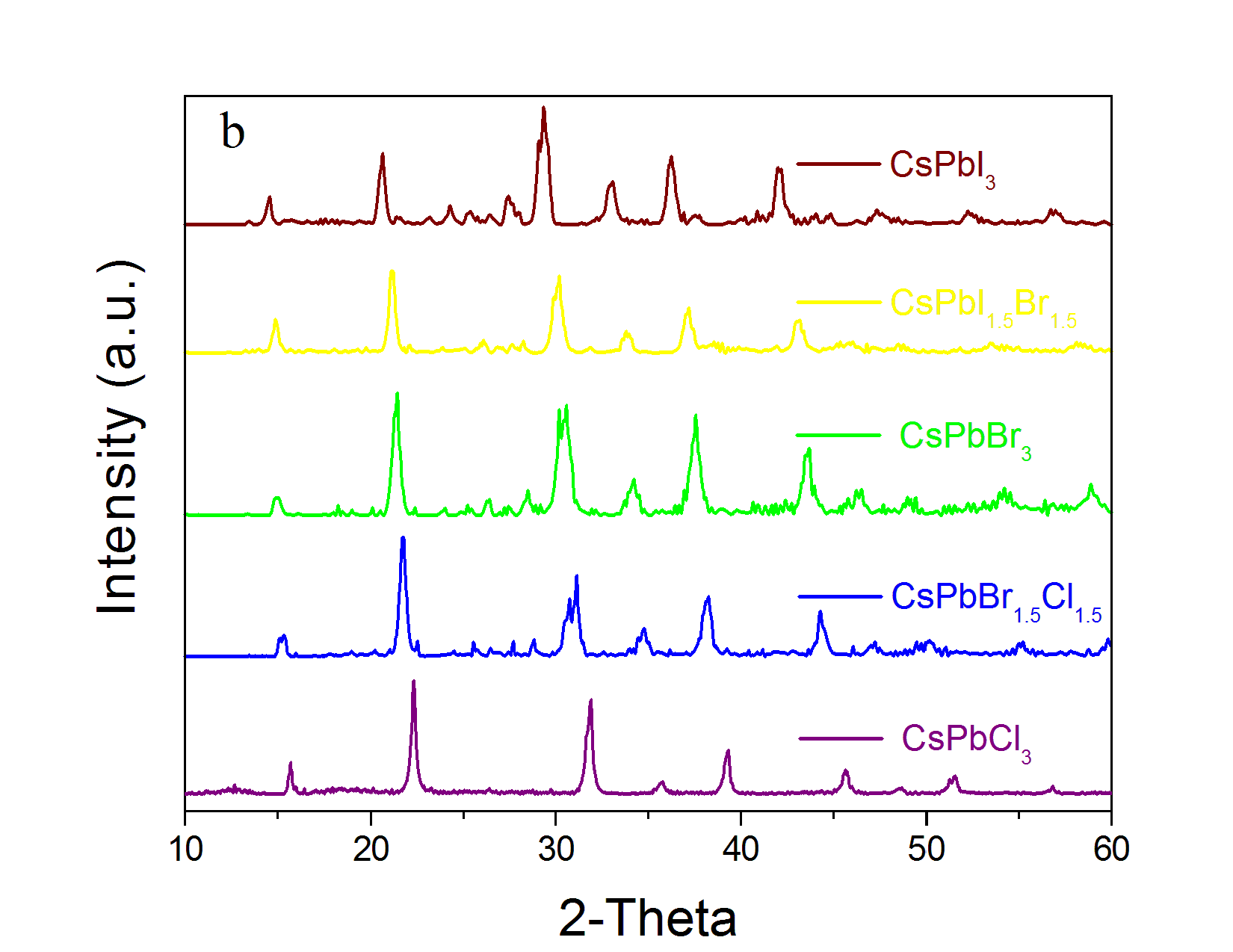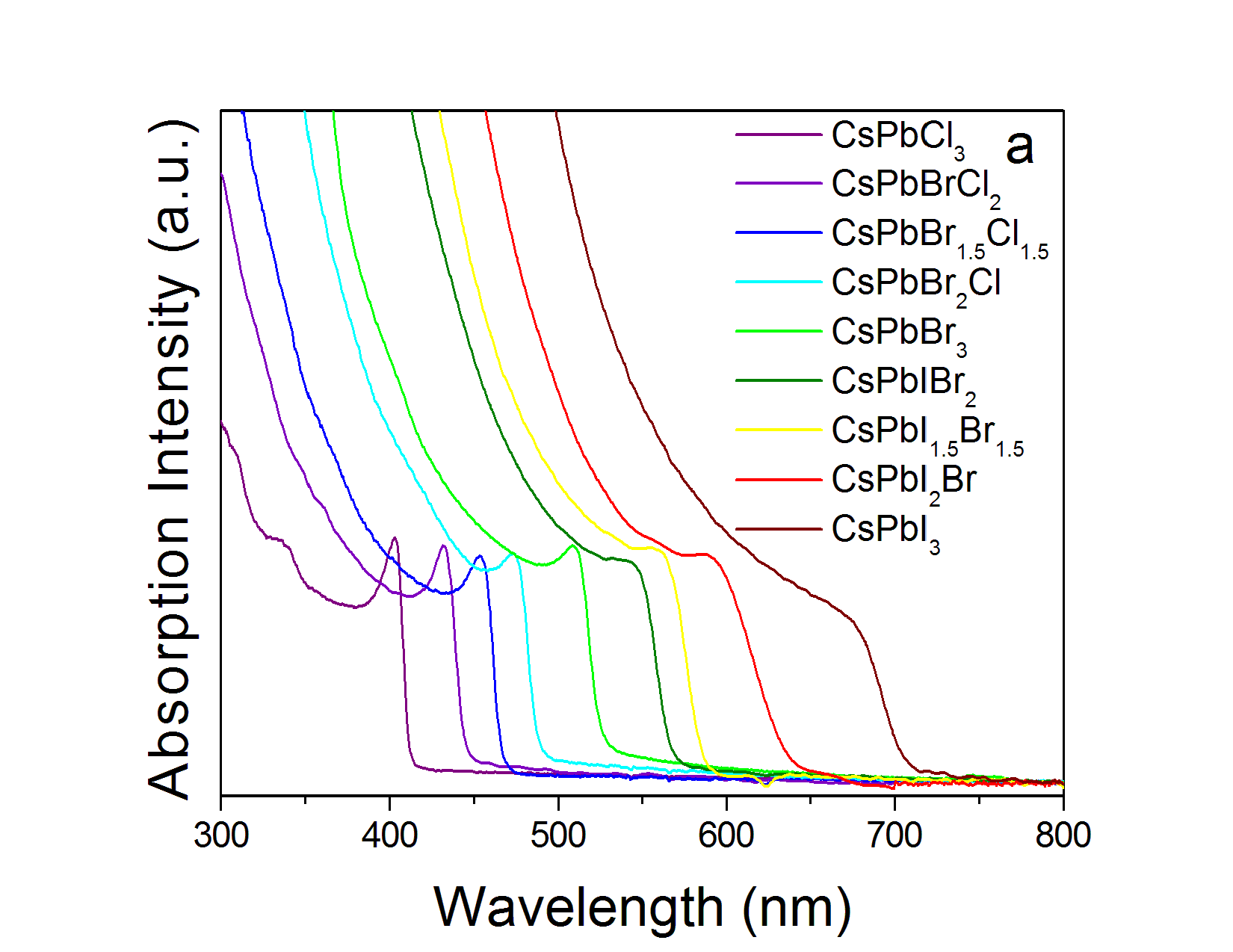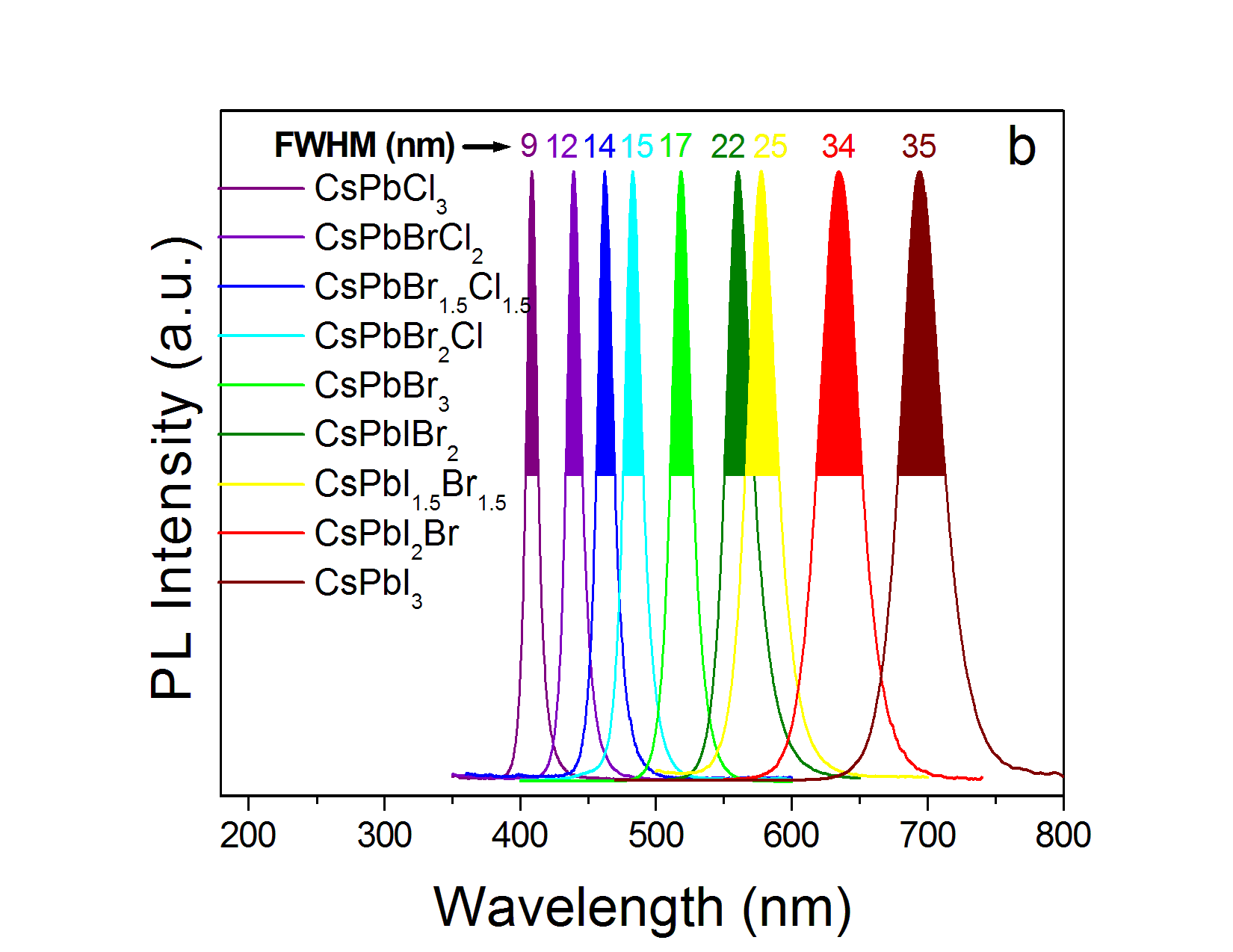Author: |
Recently, a simple and feasible method on the synthesis of high quality single- and mixed-halide CsPbX3 (X = Cl, Br, I) perovskite Quantum Dots (PQDs) with entire visible light was developed by Associate Professor Qinghui Zeng’s group in Changchun Institute of Optics and Fine Mechanics and Physics. The maximum quantum yields (QY) of the prepared CsPbX3 PQDs was 95%, which is the highest QY value ever reported for the PQDs in a colloidal solution sample. The narrowest full width at half maximum (FWHM) of the prepared CsPbX3 (X = Cl, Br, I) PQDs was 9 nm, which is the smallest FWHM value ever published for the QDs dispersion solution sample until now. The stability of the PQDs was also improved. This work is benefit to prepare PQDs and promote the application of PQDs in the optoelectroic devices field. Related work was published in ACS Appl. Mater. Interfaces (IF 7.504) (ACS Appl. Mater. Interfaces 2017,9,33020–33028). The first author is Master Ying Su, and the corresponding author is Associate Professor Qinghui Zeng.
QDs also called semiconductor nanocrystals, due to their unique optical properties (e.g., wide excitation spectra, narrow emission spectra, high QY and quantum size effect etc.), have been widely applied in the biomedical field, optoelectronics research field, and so on. The higher the QY and stability and the narrower the FWHM are, the wider application prospect they will be. During recent years, due to the high QY, narrow emission spectrum and easy tunability of the fluorescent colors by varying the ratio of different halide ions, the CsPbX3 (X = Cl, Br, I) PQDs have gradually attracted much attention. However, the stability of the whole-visible-light CsPbX3 PQDs is still an open problem until now. This reason is mainly due to the fact that the present whole-visible-light CsPbX3 PQDs were obtained generally by preparing the mixed-halide CsPbIxBr3?x or CsPbBrxCl3?x PQDs after an anion exchange of single-halide CsPbX3 at 40 °C and this process is often accompanied with the phase separation, which will lead to the drop of the fluorescent efficiency and stability.
The aim of Zeng et al. is to solve this problem and improve the fluorescent efficiency and stability of the CsPbX3 (X = Cl, Br, I) PQDs. Comparing with the reported method by obtaining the mixed-halide CsPbIxBr3?x or CsPbBrxCl3?x PQDs via an anion exchange of single-halide CsPbX3 at 40 °C, Zeng et al. have used a different hot-injection technique and prepared the CsPbX3 (X = Cl, Br, I) PQDs directly at higher temperature (~180 °C). Through this way, the surface ligands could be coordinated onto the surface of the PQDs more effectively, which is benefit to improve the optical properties and stability. The friendly double ligands of oleic acid (OA)/oleylamine (OAm) were used instead of the traditional OA/OAm/TOP mixture to synthesize the PQDs. As compared with the previous strict synthesis processes that needed vacuumization or/and glovebox equipment, a facile method that only need argon as the protective gas was provided to prepare high quality single- and mixed-halide CsPbIxBr3?x or CsPbBrxCl3?x PQDs through accurately controlling the ratio of different halide atoms and the hot injection technique.
The resulting PQDs prepared by Zeng et al. have high QY (40?95%, the highest QY is up to 95%, which is the highest QY value ever reported for the CsPbX3 PQDs in a colloidal solution sample), narrow FWHM (9?35 nm, the narrowest FWHM is 9 nm, which is the smallest FWHM value ever published for the QD dispersion solution sample until now), tunable band gap (408?694 nm) in the whole-visible-light window, and rather strong photostability. These excellent optical properties of the CsPbX3 PQDs will bring them wide applications in the photoelectric devices such as LEDs and solar cells. Moreover, Zeng et al. have constructed the crystal models of mixed-halide PQDs with the 1×1×2 supercell, calculated the band structures, and compared the band gaps with peaks in PL spectra. The theoretical direct band gaps are in good agreement with the experimental results. The CsPbX3 (X = Cl, Br, I) PQDs show great application potential and own wide prospects for development on the optoelectroic devices field in the future.
This work was supported by the Youth Innovation Promotion Association of CAS (2014194), Science and Technology Development Project of Jilin Province under Grant No.20150101190JC, and the National Natural Science Foundation of China (1167040699).




Figure 1. Schematic cubic structures (a), XRD patterns (b), and EDS (c) spectra of the dried CsPbCl3, CsPbBr1.5Cl1.5, CsPbBr3, CsPbI1.5Br1.5, and CsPbI3 PQDs. FE-SEM image of the CsPbBr3 PQDs (d); the inset is the TEM image of the CsPbBr3 PQDs.(Photo by CIOMP)


Figure 2. Normalized absorption (a) and emission (b) spectra of CsPbCl3, CsPbBrCl2, CsPbBr1.5Cl1.5, CsPbBr2Cl, CsPbBr3, CsPbIBr2, CsPbI1.5Br1.5, CsPbI2Br, and CsPbI3 PQD solutions synthesized in this work..(Photo by CIOMP)
Article links: http://pubs.acs.org/doi/10.1021/acsami.7b10612
Contact:
Qinghui Zeng, associate professor ,qhzeng@ciomp.ac.cn
State Key Laboratory of Luminescence and Applications
